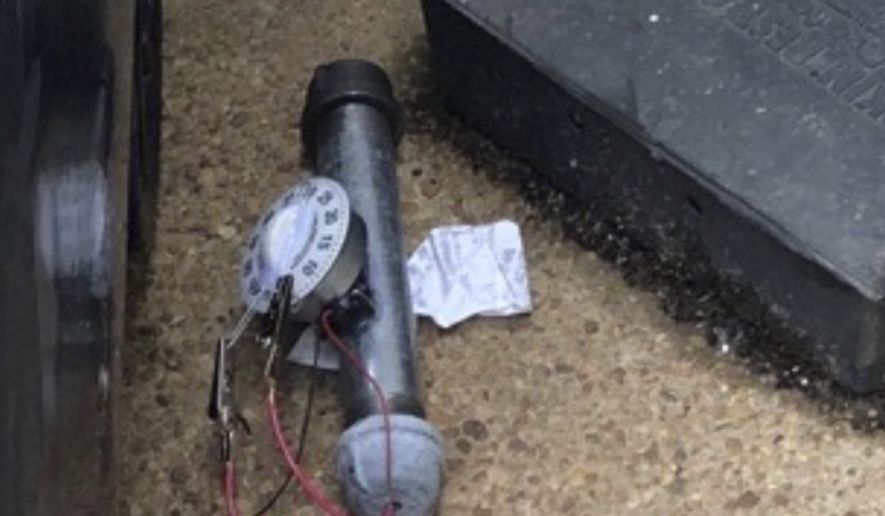The FBI’s failure to capture the person who placed pipe bombs at political party headquarters in Washington the night before the Capitol riot is partly due to corrupted geolocation data from a cellphone provider, a former FBI official has told House lawmakers.
It’s the latest account of snafus in the investigation of the pipe bombs left on Jan. 5, 2021, outside the offices of the Democratic National Committee and the Republican National Committee. The investigation has dragged on without a break, prompting the bureau this year to up the reward from $100,000 to $500,000 for information leading to an arrest.
Steven D’Antuono, the former assistant director in charge of the FBI Washington Field Office who previously led the pipe bomb investigation, said agents pursued phone data from the area and saw in surveillance videos what appeared to be a smartphone in the suspect’s hand.
“There’s a lot of phone data that came in. … It looks like a phone [on the video]. Was it a real phone? Not a real phone? Was it a ruse?” Mr. D’Antuono said in transcribed testimony to the House Republicans. “We don’t know until we find the person and ask them those questions.”
The Washington Times reviewed the transcript.
According to Mr. D’Antuono, the FBI did a complete geofence of the area to capture cellphone data information. He said the agents, however, got incomplete data because some of it was corrupted by one of the providers.
He did not suspect foul play involved in corrupting the data and didn’t want to fuel any conspiracy theories. He described it as “an unusual circumstance that we have corrupt data from one of the providers.”
Mr. D’Antuono could not recall which carrier had corrupted data.
Mr. D’Antuono gave the transcribed interview early this month to House Judiciary Committee Chairman Jim Jordan of Ohio and Judiciary Committee members Thomas Massie of Kentucky and Andy Biggs of Arizona.
House Administration Committee Chairman Rep. Barry Loudermilk of Georgia also participated in the interview.
The pipe bomb suspect was caught on surveillance video wearing a sweatshirt with the hood pulled up, a pair of Air Max Speed Turf shoes with a yellow Nike logo, a backpack and gloves. The individual was recorded walking through Capitol Hill neighborhoods carrying what federal investigators said at the time were two live pipe bombs.
Mr. D’Antuono also provided testimony about the viability of the pipe bombs, which, according to reporting by The Washington Times, were deemed to be ’inoperable.’
Mr. D’Antuono said a report from the FBI laboratory in Quantico, Virginia, determined the pipe bombs “could explode and they could cause harm or death.”
However, Mr. D’Antuono also said the one-hour kitchen timers used on the devices did not detonate the pipe bomb. More than an hour passed between the placement and discovery of the devices.
When asked by Mr. Massie if he thought the bomb could detonate 17 hours later, Mr. D’Antuono said he did not think it was possible.
“I don’t know when they were supposed to go off. Maybe they weren’t supposed to go off. … We honestly don’t know,” he said.
On May 24, House Republicans called on FBI Director Christopher A. Wray to brief them on the progress of the more than two-year-old investigation of pipe bombs.
In requesting the update, lawmakers cited The Times’ exclusive report that a former FBI agent who had been involved in the investigation accused the bureau of botching the probe and misrepresenting critical details to the public.
Former FBI agent Kyle Seraphin, who worked on the pipe bomb investigation, told The Times that he learned that the devices were inert and that agents had linked a Metrorail SmarTrip card used by the bomber to track the individual’s location to a region in Northern Virginia.
Lawmakers have sent Mr. Wray the transcribed interview with Mr. D’Antuono and asked for more documents and information from the investigation, including chain of custody logs for video footage.
• Kerry Picket can be reached at kpicket@washingtontimes.com.




Please read our comment policy before commenting.